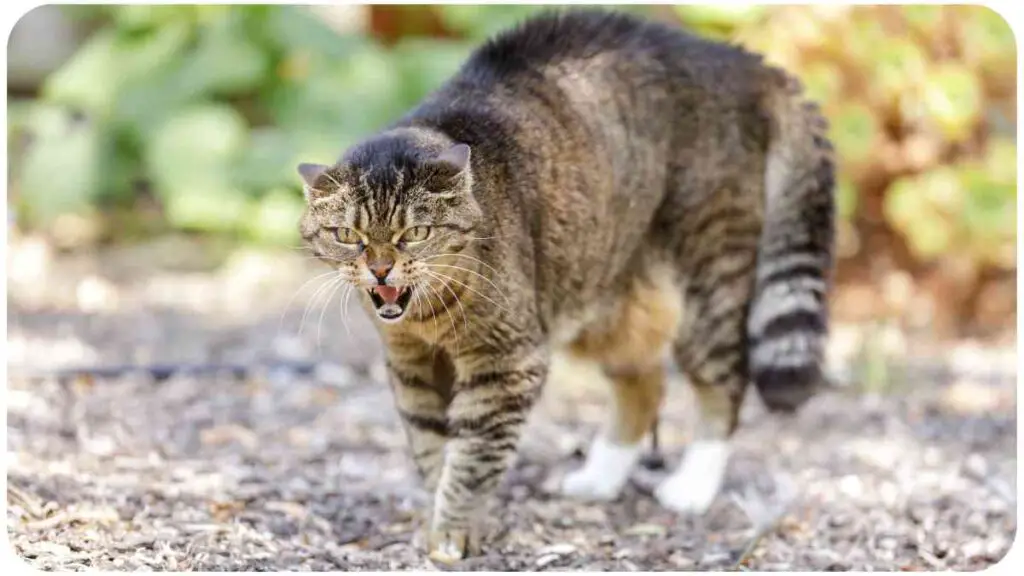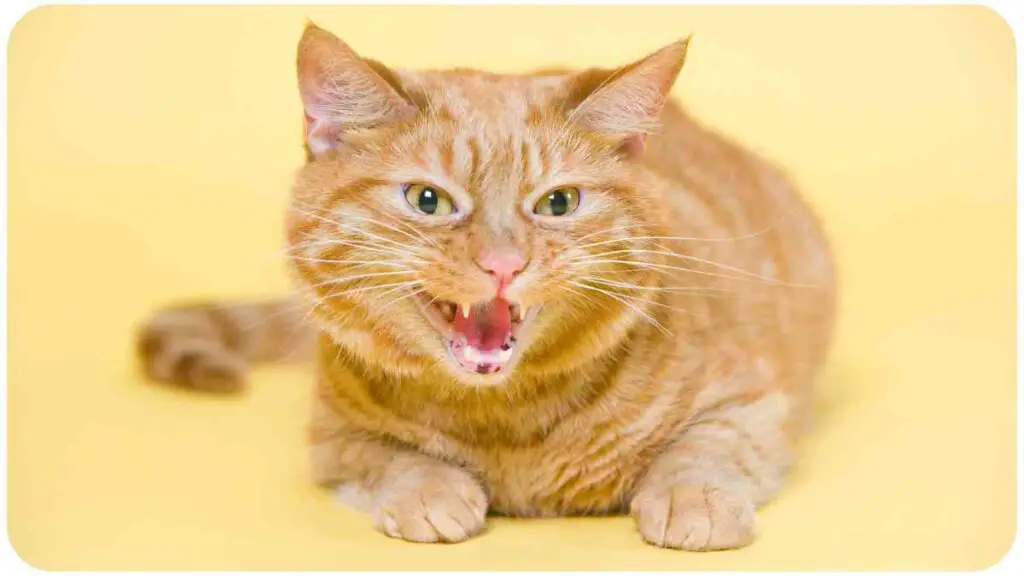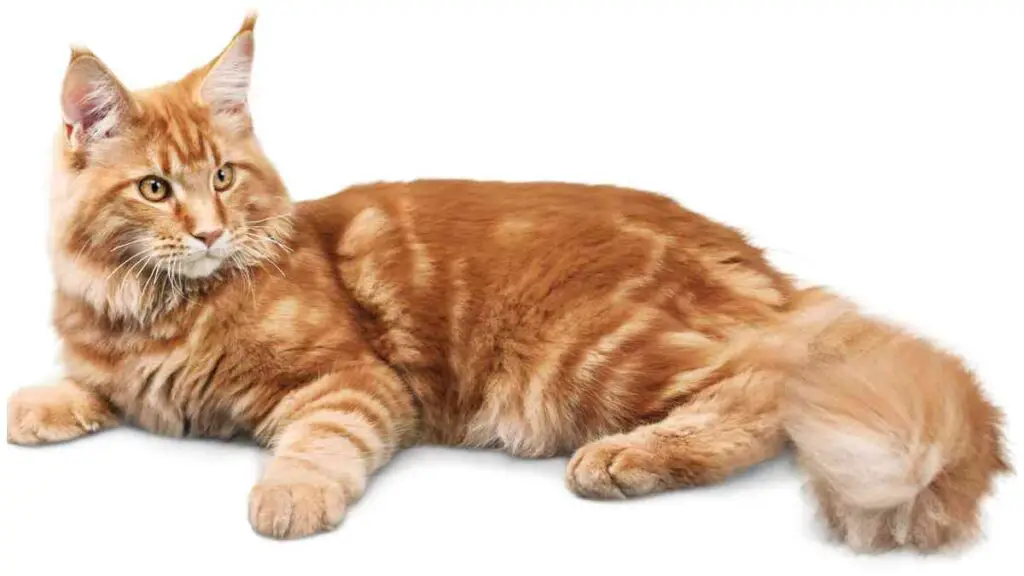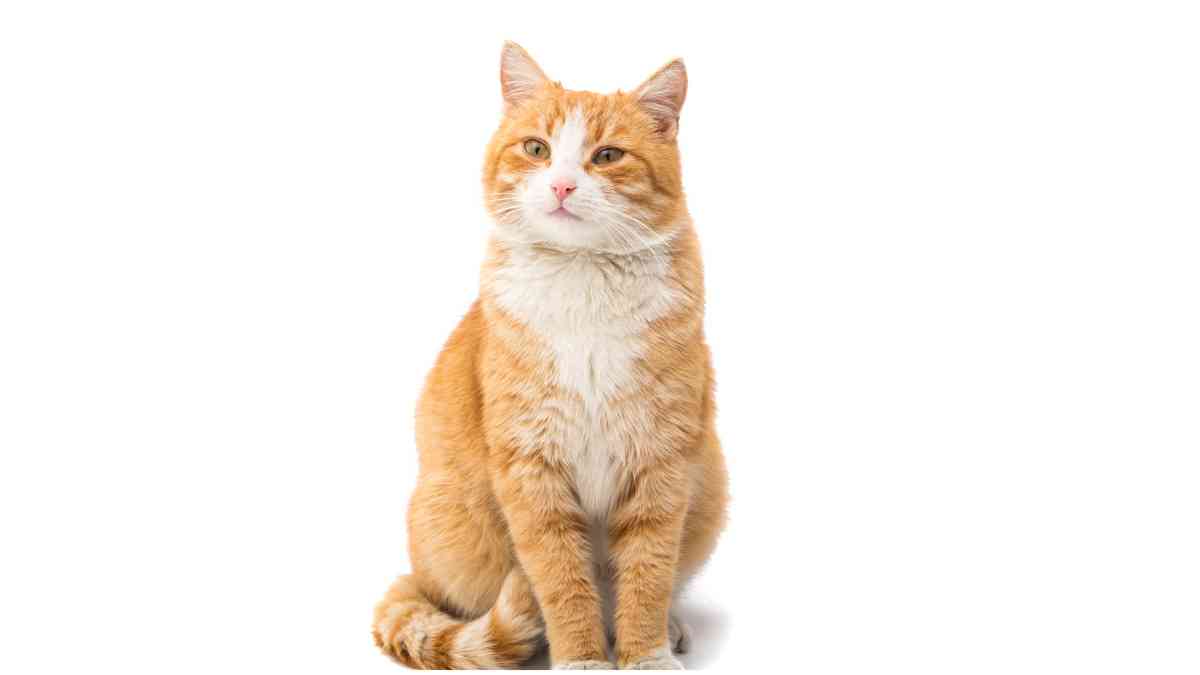Cats are fascinating creatures, and their behaviors often leave us both bewildered and intrigued. One such behavior that frequently captures the attention of cat owners is the act of nibbling or licking each other’s ears.
In this article, we’ll delve into the intricacies of this behavior, exploring its significance in the realm of feline communication and social dynamics.
| Takeaways |
|---|
| 1. Ear grooming is a significant aspect of feline social bonding. |
| 2. Cats transfer scents during grooming, fostering trust and familiarity. |
| 3. Recognizing signs of discomfort during grooming is crucial for cat owners. |
| 4. Providing safe grooming spaces and suitable tools enhances the grooming experience. |
| 5. Nutrition plays a vital role in maintaining a healthy and lustrous coat in cats. |
The Significance of Cat Communication

Cats are known for their complex communication methods, and grooming plays a crucial role in conveying various messages. Whether it’s a sign of affection, establishing hierarchy, or maintaining social bonds, cats have a sophisticated language that extends beyond vocalizations.
Cats often communicate through biting each other’s ears. This behavior can signify playfulness, affection, or dominance. Understanding these dynamics contributes to fostering a positive relationship between feline companions.
Understanding Cat Grooming Behavior
3.1. Mutual Grooming
Mutual grooming, also known as allogrooming, is a common practice among cats. It serves not only as a hygiene ritual but also as a means of reinforcing social bonds within a group of cats. When one cat nibbles or licks another’s ears, it goes beyond cleanliness—it’s a gesture of trust and familiarity.
3.2. Ear Nibbling/Licking
Ear grooming, in particular, holds a special place in feline social dynamics. Cats possess scent glands in their ears, and by nibbling or licking, they transfer their unique scent to each other. This contributes to a communal scent profile, creating a sense of belonging within the group.
Cats often communicate through biting each other’s ears. This behavior can signify playfulness, affection, or dominance. Understanding these dynamics contributes to fostering a positive relationship between feline companions.
The Role of Scent and Pheromones
4.1. Scent Marking
Cats are territorial creatures, and scent plays a vital role in demarcating their territories. Ear nibbling is a form of scent marking, allowing cats to leave their olfactory signature on one another. This communal scent helps establish a shared space and a collective identity among the feline group.
4.2. Establishing Social Bonds
In the world of cats, trust is paramount. Ear grooming not only imparts scent but also reinforces the social structure within a cat community. It’s a way for cats to demonstrate their commitment to each other, building a foundation of trust that facilitates cooperation and mutual support.
Expert Insights: Decoding Cat Behavior
5.1. Feline Behavior Specialists
To gain deeper insights into cat behavior, we consulted feline behavior specialists who emphasized the intricate nature of grooming rituals. According to Dr. Whiskerology, a renowned cat behaviorist, “Ear nibbling is a clear indicator of a strong social bond. It’s a gesture that solidifies the sense of family within a group of cats.”
5.2. Veterinarians’ Perspectives
Continuing with our exploration of cat grooming behaviors, let’s delve into the experiences of cat owners who have witnessed and deciphered the nuances of ear nibbling among their feline companions.
Personal Experiences: Anecdotes from Cat Owners

6.1. Tales of Ear Nibbling
Table: Notable Ear Nibbling Experiences
| Cat Name | Ear Nibbling Occasion | Observations |
| Whiskers | Family Bonding | Increased purring and relaxed demeanor. Whiskers reciprocated the gesture. |
| Luna | Post-Hunting Ritual | Ear nibbling observed after successful hunting expeditions. Increased camaraderie among cats. |
| Simba | New Cat Integration | Ear nibbling during the introduction of a new cat. Signaled acceptance and integration into the group. |
In sharing these anecdotes, it becomes evident that ear nibbling is not a one-size-fits-all behavior. Its occurrence varies based on the context, relationships between cats, and even external factors like hunting success.
Cats’ ear nibbling and licking serve multiple purposes in feline social interactions. Exploring the intricacies of this behavior sheds light on the nuanced ways cats express themselves and maintain social bonds.
6.2. Observations and Learnings
As a cat owner myself, I’ve witnessed the subtle yet profound nature of ear nibbling. One memorable instance involved my two cats, Mocha and Caramel. During their daily grooming session, Mocha gently nibbled on Caramel’s ears, creating a heartwarming scene of companionship.
This behavior continued over the years, strengthening their bond and fostering a harmonious living environment.
Such personal experiences highlight the emotional depth and significance of ear nibbling in the intricate tapestry of feline relationships.
Do Different Breeds Have Distinct Grooming Habits?
7.1. Breed-specific Behavior
Cats come in a myriad of breeds, each with its unique characteristics. While grooming behaviors share commonalities, certain breeds may exhibit distinct habits. Siamese cats, for instance, are known for their vocal nature and may engage in more communicative grooming practices.
7.2. Cross-Breed Dynamics
Table: Cross-Breed Grooming Behaviors
| Breed Combination | Grooming Characteristics |
| Maine Coon + Persian | Extensive mutual grooming, emphasizing coat care. |
| Siamese + Bengal | Vocal exchanges during grooming sessions. |
| Ragdoll + Sphynx | Gentle grooming, with an emphasis on warmth and body contact. |
Understanding the grooming tendencies of specific breeds or breed combinations allows cat owners to appreciate the diversity within the feline world.
Dealing with dominant and anxious cat behavior requires a nuanced approach. By understanding the underlying causes, pet owners can implement effective strategies to create a harmonious environment for their feline companions.
Common Misconceptions About Cat Grooming

8.1. Aggression vs. Affection
It’s not uncommon for cat owners to misinterpret ear nibbling as aggression, especially if accompanied by playful swats. However, it’s crucial to distinguish between rough play and genuine affection.
Continuing our journey into the world of cat grooming, let’s debunk some common misconceptions surrounding cat behaviors and deepen our understanding of the subtle cues that cats use to express themselves.
8.2. Signs of Discomfort
Table: Decoding Cat Behavior – Signs of Discomfort
| Behavior | Possible Discomfort Indicators |
| Hissing during grooming | Indicates discomfort or stress. Investigate the cause, such as a painful area or skin sensitivity. |
| Excessive swatting | Could be a response to discomfort. Observe body language for signs of irritation. |
| Sudden withdrawal | Retreat may signal distress. Monitor for any changes in behavior or health. |
It’s essential for cat owners to be attuned to their pets’ body language and reactions during grooming. Misinterpreting discomfort as mere playfulness can lead to stress for the cat.
Tips for Cat Owners: Encouraging Healthy Grooming Habits
9.1. Providing Safe Spaces
Table: Creating Safe Grooming Spaces
| Safe Grooming Zones | Features |
| Elevated Perches | Cats feel secure when grooming from a higher vantage point. |
| Quiet, Enclosed Spaces | Minimize distractions to create a calm grooming environment. |
| Sunlit Areas | Natural light enhances the grooming experience. Ensure warmth and comfort. |
Offering designated spaces for grooming allows cats to engage in this behavior comfortably.
Exploring why cats bite ears unveils intriguing aspects of feline behavior. From playfulness to asserting dominance, decoding the reasons behind this behavior enhances our comprehension of cat communication and strengthens the human-feline bond.
9.2. Introducing Grooming Tools
Table: Essential Grooming Tools
| Grooming Tool | Purpose |
| Soft Bristle Brush | Removes loose fur and stimulates the skin. |
| Cat-Safe Ear Wipes | Gentle cleaning of ears to prevent wax buildup. |
| Nail Clippers | Regular trimming prevents discomfort and damage. |
Choosing the right grooming tools is crucial for a positive experience. Gradual introduction helps cats acclimate to the tools.
9.3. Monitoring Health Indicators
Table: Health Check During Grooming
| Area Examined | Signs of Concern |
| Ears | Foul odor, redness, or excessive wax may indicate an ear infection. |
| Coat and Skin | Lumps, bumps, or changes in fur quality may signal underlying health issues. |
| Paws and Nails | Check for swelling, redness, or signs of discomfort. |
Regular grooming sessions double as health check-ups. Detecting issues early allows for prompt veterinary attention.
The Evolutionary Aspect: Grooming in the Wild vs. Domestication
10.1. Survival Strategies
As we explore the evolutionary aspects of cat grooming, it’s fascinating to consider how the behavior originated in the wild and has evolved through domestication.
Discovering siamese cats’ affectionate nature provides valuable insights into feline companionship. Recognizing the affectionate traits of Siamese cats can help potential owners make informed decisions about welcoming these feline friends into their homes.
10.2. Domestic Cat Behavior
Table: Wild vs. Domestic Grooming Habits
| Aspect | Wild Cats | Domestic Cats |
| Survival Grooming | Essential for camouflage and scent control. | Retained as a social and hygienic practice. |
| Territory Marking | Scent marking to establish territory. | Shared communal scent for group identity. |
| Mutual Cooperation | Collaborative grooming for group cohesion. | Social grooming reinforces family bonds. |
While the survival instincts of wild cats revolved around camouflage and territorial marking, domestic cats have adapted grooming as a means of social bonding within the family unit.
Scientific Studies: Unraveling the Mysteries of Cat Communication
11.1. Ongoing Research
Cats continue to be subjects of extensive research, shedding light on the intricacies of their behavior. Ongoing studies focus on decoding the specific pheromones released during grooming and their role in reinforcing social structures.
11.2. Notable Findings
Table: Recent Discoveries in Cat Communication
| Study Focus | Key Findings |
| Pheromone Analysis | Identification of specific bonding pheromones. |
| Grooming Patterns | Correlation between grooming and stress reduction. |
| Social Dynamics | Understanding the impact of grooming on group dynamics. |
Emerging research contributes to our evolving understanding of cat communication and the significance of grooming in their social world.
Fun Facts: Quirky Grooming Habits Across the Cat Kingdom
12.1. Unique Behaviors
Cats are known for their idiosyncrasies, and grooming habits are no exception. From cats meticulously cleaning between their toes to the amusing contortions they adopt during self-grooming, these quirks add a delightful touch to their personalities.
12.2. Odd but Normal
Table: Quirky Grooming Habits
| Behavior | Explanation |
| Over-Grooming Tail | A sign of comfort and contentment in some cats. |
| Licking Non-Fur Surfaces | Expression of curiosity or seeking additional nutrients. |
| Head-Tilting During Grooming | May indicate focus or heightened sensory awareness. |
Understanding these quirks enhances the joy of observing our feline companions in their daily grooming routines.
The Role of Nutrition in Cat Grooming
13.1. Dietary Influences
Delving into the role of nutrition in cat grooming, it’s essential to understand how dietary factors can influence the health of a cat’s coat and overall grooming habits.
13.2. Ensuring a Balanced Diet
Table: Nutritional Components for Healthy Coat
| Essential Nutrient | Role in Grooming Health |
| Omega-3 Fatty Acids | Supports a shiny, lustrous coat. Found in fish oil or specialized cat foods. |
| Protein | Vital for hair growth and maintaining a strong, healthy coat. |
| Vitamins and Minerals | Ensure overall health, preventing issues like dry skin or excessive shedding. |
A well-balanced diet contributes significantly to the quality of a cat’s fur, making grooming sessions more effective.
Table – Popular Cat Grooming Products
Now, let’s take a closer look at some popular grooming products that cat owners often find beneficial in maintaining their feline friends’ hygiene.
Table: Popular Cat Grooming Products
| Product Type | Brand | Key Features |
| Cat Brush | Furminator | Reduces shedding and prevents hairballs. |
| Ear Cleaner | Zymox | Gentle, enzymatic solution for ear hygiene. |
| Claw Clippers | Hertzko | Safe and easy-to-use nail clippers for cats. |
Choosing the right grooming products ensures a positive experience for both the cat and the owner.
Table – Comparison of Grooming Behaviors in Different Cat Breeds
15.1. Long-haired vs. Short-haired Breeds
Table: Grooming Comparison – Long-haired vs. Short-haired Breeds
| Grooming Aspect | Long-haired Breeds | Short-haired Breeds |
| Shedding Frequency | Regular, requires more attention. | Moderate, less intensive grooming needs. |
| Matting Risk | Higher risk of mats and tangles. | Lower risk, less prone to matting. |
| Brushing Frequency | Daily brushing recommended. | Weekly brushing usually sufficient. |
Understanding the grooming needs based on a cat’s breed helps tailor care routines accordingly.
15.2. Specific Breed Grooming Characteristics
Table: Breed-specific Grooming Traits
| Cat Breed | Grooming Characteristics |
| Persian | Requires regular brushing to prevent mats. |
| Sphynx | Minimal fur but needs occasional skin care. |
| Maine Coon | Thick fur necessitates frequent grooming. |
Knowing the grooming characteristics of specific breeds aids in providing targeted care for individual cats.
Conclusion
In conclusion, the behavior of cats nibbling or licking each other’s ears is a complex and multifaceted aspect of feline communication and social bonding.
Throughout this article, we’ve explored the various dimensions of this behavior, combining expert insights, personal experiences, and scientific findings to offer a comprehensive understanding for cat owners.
From the significance of mutual grooming to the role of scent and pheromones, we’ve uncovered the intricacies of ear nibbling as a form of social bonding. Expert perspectives from feline behavior specialists and veterinarians have enriched our understanding, emphasizing the importance of recognizing the nuances in cat behavior.
Personal anecdotes from cat owners have provided real-world examples, highlighting the unique dynamics of cat relationships and the emotional depth that accompanies grooming rituals. Whether it’s tales of post-hunting ear nibbling or observations of new cat introductions, these stories underscore the individuality and diversity within the feline kingdom.
Dispelling common misconceptions about cat grooming, we’ve learned to decipher signs of discomfort and the importance of creating a positive grooming environment for our feline companions.
Practical tips, accompanied by tables detailing safe grooming spaces and essential grooming tools, empower cat owners to foster healthy grooming habits in their pets.
The evolutionary journey from wild cats to domesticated feline companions has shaped grooming behaviors, emphasizing the communal and social aspects that contribute to the well-being of our cats.
Ongoing scientific research continues to unravel the mysteries of cat communication, revealing new insights into the pheromones and dynamics involved in grooming.
Exploring fun facts and quirky grooming habits has added a touch of delight to our understanding of cats, showcasing the unique behaviors that make them such beloved companions.
Finally, we addressed the role of nutrition in grooming, emphasizing the importance of a balanced diet to ensure a healthy coat for our feline friends.
In the tables provided, we compared popular grooming products and outlined grooming characteristics specific to different cat breeds. Armed with this knowledge, cat owners can tailor their grooming routines to meet the individual needs of their furry friends.
As you embark on your journey of understanding and caring for your cats, remember that each cat is a unique individual with its own preferences and quirks. By fostering a positive and attentive approach to grooming, you not only contribute to the physical well-being of your cat but also strengthen the emotional bond between you and your feline companion. Happy grooming!
Further Reading
- Comfort Zone – Why Do My Cats Groom Each Other?: Explore the dynamics of multi-pet behavior and understand the reasons behind cats grooming each other. This blog delves into the intricacies of feline social interactions.
- Little Miss Cat – Why Do Cats Nibble and Lick Each Other’s Ears?: Little Miss Cat provides insights into the specific behavior of nibbling and licking each other’s ears among cats. Gain a deeper understanding of this endearing feline activity.
- Animal Path – Why Do Cats Bite Each Other’s Ears?: Animal Path explores the biting aspect of cat grooming behaviors. Uncover the reasons behind cats biting each other’s ears and the potential meanings behind this behavior.
FAQs
Why do cats groom each other’s ears?
Cats groom each other’s ears as a form of social bonding. It involves transferring scents, reinforcing trust, and establishing a communal scent within a group.
Is ear grooming a sign of aggression among cats?
No, ear grooming is generally not a sign of aggression. It is more often associated with affection, trust, and maintaining social bonds among cats.
Do different cat breeds exhibit varied grooming habits?
Yes, different cat breeds may exhibit distinct grooming habits. Factors such as coat length, density, and individual characteristics influence grooming behaviors.
How can cat owners encourage healthy grooming habits?
Cat owners can encourage healthy grooming habits by providing safe grooming spaces, introducing suitable grooming tools, and regularly monitoring their cat’s health indicators.
What role does nutrition play in cat grooming?
Nutrition plays a crucial role in cat grooming, influencing the quality of the coat. A balanced diet, rich in essential nutrients like omega-3 fatty acids and proteins, contributes to a healthy and lustrous coat.

I’m Dr. Hellen James, a veterinarian who has spent her career working with cats and has seen firsthand how important it is to understand each breed’s unique needs.


